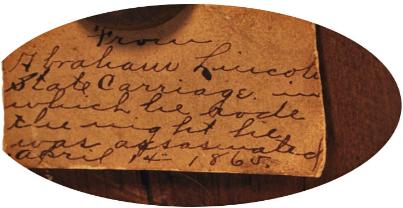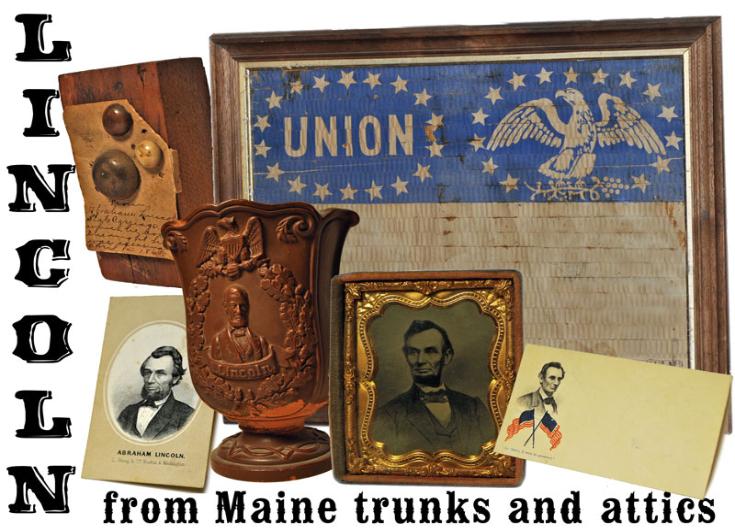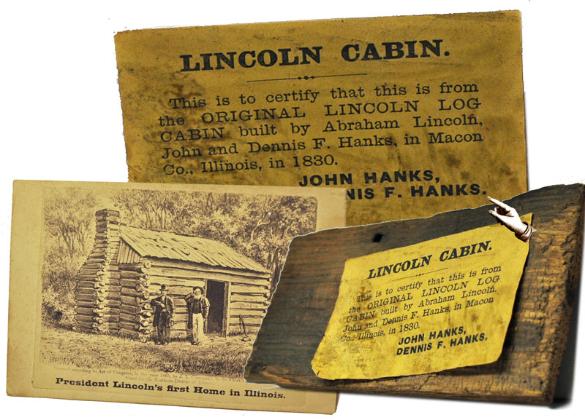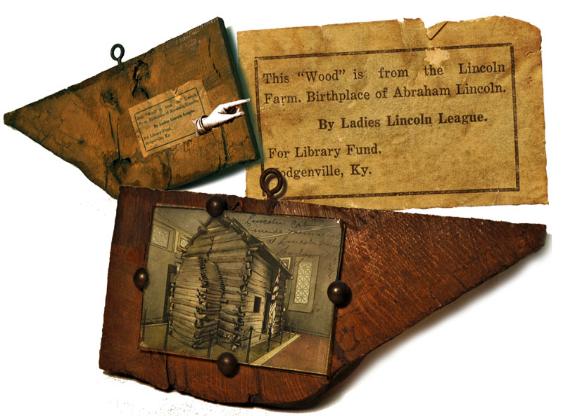

Above and right a small block of wood is embellished with decorative tacks of brass, bone and horn
from Abraham Lincoln’s state carriage.
LEFT TO RIGHT: Memorial portrait cards like this one by Prang of Boston & Washington were commonly placed in family photo albums. Memorial items like this rare redware vase were quickly brought into production by local craft firms. Their limited number and often fragile construction have left few examples of intact pottery. Enterprising Portland ,Maine photographer George F. Ayer produced Lincoln tintypes like the one seen above from a popular engraving. Variations of all manner of postal covers to include memorial issues and examples left from earlier political campaigns like the above were preserved by period collectors.

Above in its period frame a paper candle lantern from the 1864 Lincoln campaign had beencarefully laid flat and framed for posterity.


Even the famous Lincoln cabin fell prey to the mass interest in Lincoln memorabilia. After the assassination the cabin fell into the possession of cousins John and Dennis Hanks who took every advantage of their control of the old place and public interest. The above photograph of the Hanks brothers was quickly copyright protected in 1865 and offered for sale to an eager public. The Hanks cousins scavenged off original roof shingles and offered sections for sale with printed labels of provenance. Such offerings were followed by slices from beams with provenance provided by the Hogville, Kentucky Ladies Lincoln League. With the original cabin now lost in its entirety these fragments of the original are prized fragments of history. In 1893 what was left of the original cabin was disassembled and shipped northward to serve as an exhibit at the World’s Columbian Exposition in Chicago. The original cabin was lost after the Exposition, and may have been used as firewood.






